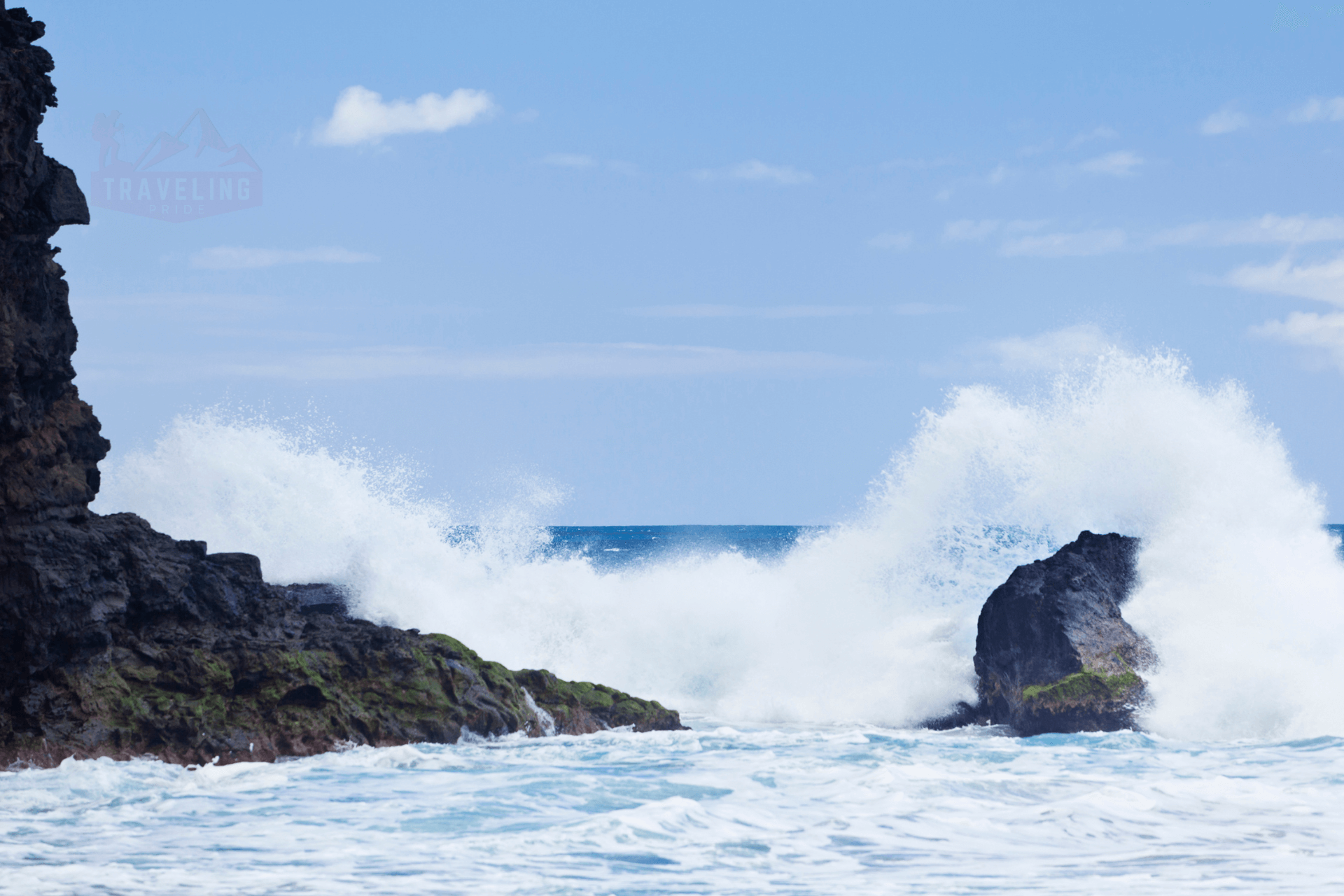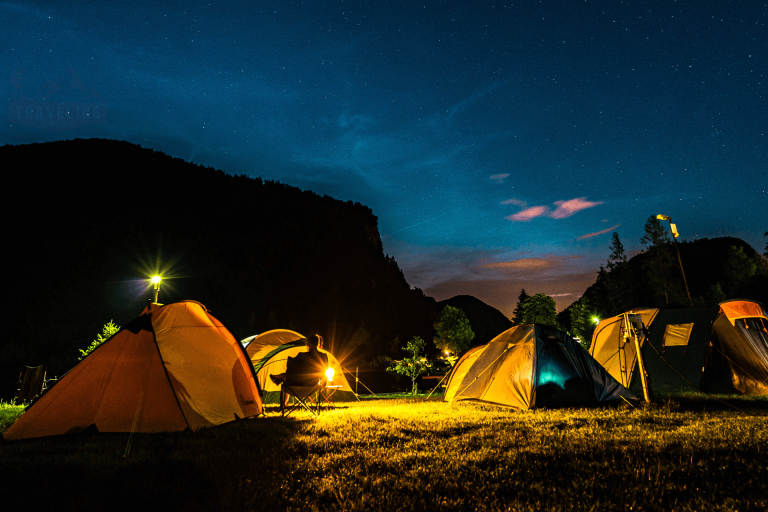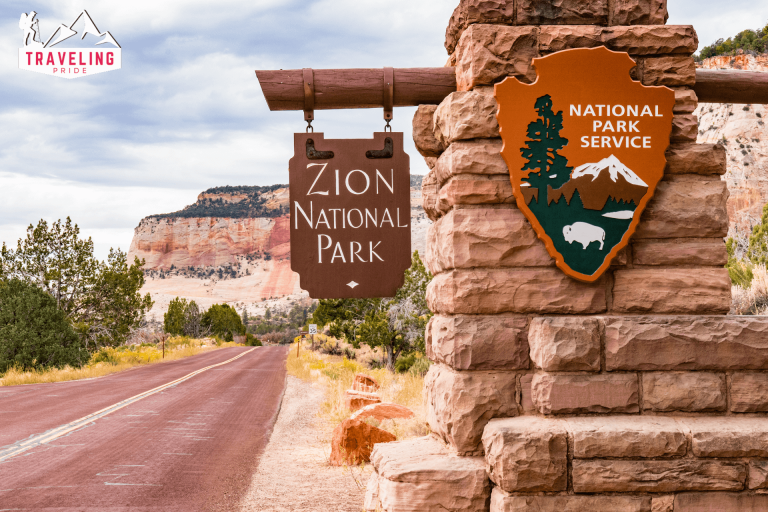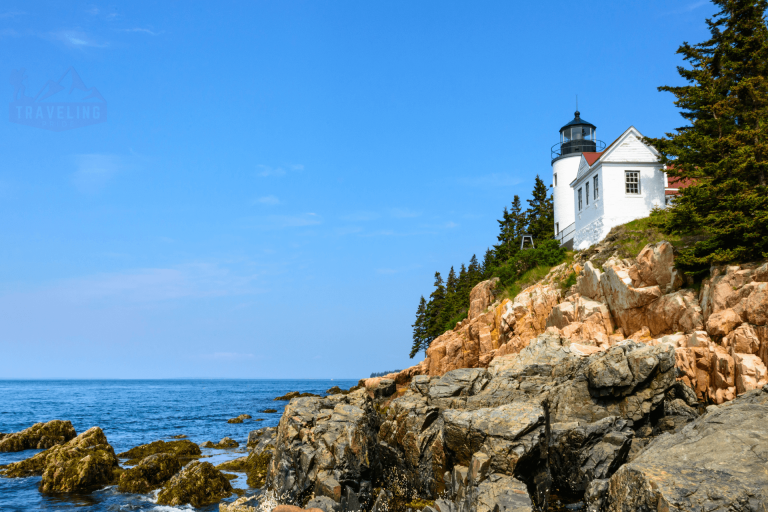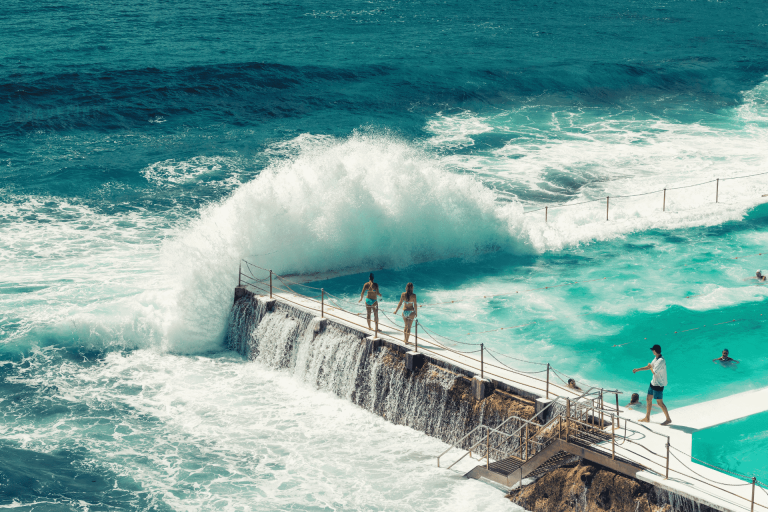17 Most Dangerous Beaches in Hawaii
Hawaii is a dream destination for many, celebrated for its stunning landscapes, clear waters, and rich culture. Yet, beneath the allure of its beaches lurk hidden dangers that can turn a day of enjoyment into a potentially life-threatening situation. Awareness of these risks is crucial for anyone exploring Hawaii’s coastal wonders. This guide will delve into most dangerous beaches in Hawaii and highlight the natural threats you might encounter.
Hanakapiai Beach (Kauai)
Even though Hanakapiai Beach is located along the breathtaking Na Pali Coast, it is notorious for its treacherous waters. There are no protective reefs or shallow areas to break the force of the ocean waves, leading to exceptionally strong riptides. Over the years, these conditions have tragically claimed the lives of several unsuspecting swimmers. Signs along the trail to the beach warn visitors of the dangers, emphasizing the importance of heeding local advice and exercising extreme caution when visiting this picturesque but perilous location.
Hapuna Beach (Big Island)
While Hapuna Beach is one of the most popular and picturesque beaches on the Big Island, it is also prone to seasonal high surf that can be hazardous to swimmers. Strong rip currents can appear without warning, pulling even the strongest swimmers out to deeper waters. While lifeguard presence does help mitigate some risks, it is essential for beachgoers to remain alert and understand the daily ocean conditions before swimming or participating in water activities.
Hookipa Beach (Maui)
A famous spot for windsurfers and surfers alike, Hookipa Beach on Maui’s north shore is known for its large waves and strong winds. While thrilling for experts, these conditions can be hazardous for inexperienced swimmers and casual beach visitors. The shorebreak can be especially powerful, and the combination of wind and waves creates a challenging environment. Observing the surfers and windsurfers from a safe distance provides an engaging experience without the inherent risks.
Hanauma Bay (Oahu)
Hanauma Bay, a popular snorkeling spot in Oahu, is famous for its vibrant marine life and clear waters within a volcanic crater. It offers a safe environment for snorkelers of all levels but requires respect for its ecosystem. Conservation efforts include visitor restrictions and educational programs to protect the reef. While the inner bay is calm, caution is advised in the outer areas due to stronger currents. Visitors are encouraged to follow guidelines and support conservation initiatives to help preserve this natural wonder for future generations.
Kilauea Beach (Kauai)
Located on the northern shore of Kauai, Kilauea Beach can be deceptively dangerous. Known for its towering waves during winter, this beach can be a thrill for experienced surfers but hazardous for unwary visitors. The steep shoreline can produce powerful shore breaks, and hidden rocks below the surface increase the risk of injury. Those unfamiliar with the beach should stay closer to the shore and avoid venturing into the water without consulting local experts.
Ke’ekai Point (Oahu)
Located near the northern tip of Oahu, Ke’ekai Point is known for its rugged coastline and is a popular spot for adventurous visitors looking for less crowded beach experiences. However, it is also infamous for its unpredictable and strong ocean currents. The rocky terrain and sudden underwater drop-offs increase the peril for those unfamiliar with the area’s characteristics. Expert advice and proper safety measures are essential for anyone visiting this region.
Kaihalulu Red Sand Beach (Maui)
Kaihalulu Beach, often called Red Sand Beach, is tucked away in a hidden cove on Maui’s Hana coast. Its striking red sand, framed by rugged cliffs and lush greenery, makes it a breathtaking destination. However, reaching this beach requires navigating a narrow and challenging trail, which can be slippery and precarious, especially after rain.
The strong currents and sharp, rocky areas in the water pose additional hazards, making swimming risky. Due to its seclusion and potential dangers, Kaihalulu Beach is best enjoyed from the shore, where visitors can soak in the unique scenery while exercising caution. Respecting the natural environment and understanding the inherent risks are crucial for a safe and enriching visit.
Lumahai Beach (Kauai)
Lumahai Beach, famed for its appearance in classic films and breathtaking natural beauty, is another of Kauai’s alluring yet dangerous beaches. This beach is known for its powerful waves and unpredictable ocean conditions. Even on relatively calm days, Lumahai’s waves can create hazardous riptides, making swimming incredibly inexperienced for everyone. Visitors are advised to admire the beach from the safety of the shore, enjoying its scenery without stepping into the water.
Makena Beach (Maui)
Also known as “Big Beach,” Makena Beach in Maui is famous for its expansive shoreline and crystal-clear waters. Despite its beauty, it is also known for strong currents and dangerous shore breaks, especially during the summer. Large waves can unexpectedly knock swimmers and beachgoers down, potentially causing severe injuries.
Magic Sands Beach (Big Island)
Magic Sands Beach, also known as Laʻaloa Beach, is a popular destination on Hawaii’s Big Island, drawing visitors with its white sand and clear waters. However, this beach gets its name from the mysterious way its sand can disappear overnight during high surf conditions, replaced by exposed lava rock until calmer waters return. This unpredictable shifting makes the beach a beautiful but potentially dangerous place for swimming.
Strong waves and powerful shore breaks can occur without warning, creating dangerous conditions for unsuspecting swimmers. When the waves are too intense, visitors are advised to enjoy the sun, sand, and beautiful scenery from a safe distance and to heed any posted safety warnings accordingly. Taking precautions and understanding the ocean’s power can ensure a safe and enjoyable visit.
Polihale State Park (Kauai)
Polihale State Park is one of Hawaii’s most remote and least developed beaches. Its isolation offers stunning views and tranquil settings, but the lack of lifeguards, strong currents, and sudden drop-offs make it particularly hazardous. Visitors risk being caught in unanticipated dangers without proper preparation and understanding of the conditions.
By understanding these risks and taking the necessary precautions, visitors can still enjoy Hawaii’s natural beauty while keeping themselves and others safe. Remember, the ocean demands respect and careful attention to ensure every beach outing is a positive experience.
Pipeline Beach (Oahu)
Pipeline Beach, located on Oahu’s North Shore, is famous for its powerful waves and is a sacred surfing spot. Each winter, surfers worldwide flock to this iconic location to test their skills on Pipeline’s renowned tubular waves. While it’s a thrilling sight for spectators and a coveted challenge for expert surfers, the waves break on a shallow reef, creating a hazardous environment.
The combination of massive swells and sharp coral poses significant risks, even for seasoned surfers. Strong currents and tides can also be hazardous for swimmers. Visitors wishing to witness the impressive surfing should do so from a safe vantage point on the shore, considering the beach’s dangers and respecting all posted safety advisories.
Queen’s Bath (Kauai)
Queen’s Bath, located on Kauai’s north shore, is a stunning tidal pool known for its clear waters and serene surroundings formed by lava rocks. While it offers a tranquil escape during calm seas, it becomes dangerous with high surf, posing risks of unpredictable waves. Accessing the site involves a muddy, steep trail, so visitors must prioritize safety, heed warning signs, and respect nature’s power to enjoy this natural wonder responsibly.
Sandy Beach (Oahu)
Sandy Beach is renowned for its stunning views and large waves, which attract bodyboarders and surfers from all over. However, the shorebreak at Sandy Beach is notorious for causing injuries, especially to those unaccustomed to its forceful surf. Visitors should be vigilant of the powerful waves and swift currents, which can quickly lead to dangerous situations.
Waimea Bay (Oahu)
Waimea Bay is a legendary spot on Oahu’s North Shore, famous for big wave surfing during winter. When the waves crest over 30 feet, the bay becomes a spectacle for thrill-seekers and observers alike. However, during these times, the ocean can be extremely hazardous, not just for surfers but for swimmers and beachcombers, too.
Strong rip currents and the sheer power of the waves can pull even experienced swimmers out to sea. When the water is calmer in the summer, Waimea Bay transforms into a family-friendly beach perfect for swimming and snorkeling. Nevertheless, visitors should remain cautious year-round, always aware of the ocean conditions, and respect any lifeguard warnings.
Waikiki Beach (Oahu)
Waikiki Beach on Oahu’s south shore is a world-renowned destination known for its golden sand, vibrant atmosphere, and excellent surfing conditions. Attracting millions of visitors annually, it features a range of hotels, restaurants, and shops for a complete vacation experience. While generally safe for swimming, caution is advised during peak times due to strong currents and crowds. Lifeguard stations ensure beachgoers can enjoy the ocean safely, making it an ideal spot for surfers and sun-seekers.
Yokohama Bay (Oahu)
Yokohama Bay, a secluded beach on Oahu, boasts stunning natural beauty but poses dangers due to strong currents and powerful waves, especially in winter. With no lifeguards present, visitors should exercise caution, stay informed about tide conditions, and maintain a safe distance from the water unless with a knowledgeable companion. Prioritizing local guidance and respecting the ocean’s power is essential for a secure and enjoyable Hawaiian beach experience.
Conclusion: Most Dangerous Beaches in Hawaii
Hawaii’s beaches are stunning natural attractions for their unique landscapes and ecological features. However, they come with risks that visitors should consider. Whether enjoying Waimea Bay, Kaihalulu Beach, or Hanauma Bay, balancing adventure with safety awareness is essential. Following lifeguard advisories and posted signs ensures a safe experience while allowing visitors to connect with the beauty of Hawaii’s coastlines and help preserve these treasures for future generations.

